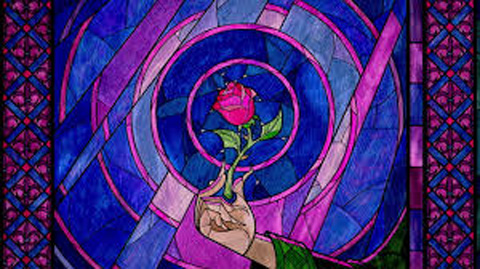We are in a gigantic change process in our world at large with the pandemic, in our Dharma with the allegations, and within ourselves as we attempt to deal with such upheaval in our lives. I have struggled with what I might be able to write in order to help us as Ministers at this time. Then it occurred to me to share information about the nature of change. Understanding this process and where you are in it is an essential part of meeting the challenge of changing to Aquarian leadership.
As a reference point, I would like to share an interesting resource from a July 1981 paper written by SS Narayan Singh (aka Michael Lincoln-Ebner) entitled, Coming Up Roses—The Change Process. It is my hope that you will find this information helpful and supportive at this time in our shared history.
Change is necessary and inevitable to meet the demands of our evolving universe. However, any change shakes the whole. It disorients us, shakes our faith in the universe, messes up our automatic response system, and puts us face-to-face with the unknown (Narayan, p.4). Initial resistance to change is part of our human nature. However, once there is surrender and commitment to change, there are predictable sequences and processes that occur.
Six Stages of Change
The first stage of change, according to Narayan Singh, is the “trip off.” This is the result of a gradual need for change that reaches a breaking point or a sudden event that impacts the world. We are experiencing both simultaneously. This stage is fraught with “anxiety, a sense of loss, disgust, resentment, fear, and self-checkmating.” (Appendix and chart courtesy Wahe Guru Singh Khalsa, p. 2.)
The second stage he notes is resistance. “At this point, you tend to go out of sync with your surrounding systems and significant others.” (Narayan, p.8).
Falling apart is the third stage. Here there are wide swings of emotion and reaction. Despite how uncomfortable this period is, it is also a very valuable part of the process and needs to take place. It is recommended during this phase to avoid thinking of past mistakes, defer making any evaluations and decisions, and embrace a brainstorming approach to ideas (Narayan, p. 12). This stage is also marked by feelings of discombobulation, a sense of unreality, and of being dead, empty, and in limbo (Narayan, p13).
As I listened to our second generation for hours and hours during Khalsa Council and the listening tour, tears rolled down my cheeks. Yes, this is an emotional stage.
Trajectory is the fourth stage. This is a period in which you are neither here nor there. What is taking place is a lot of internal processing in your unconscious mind. The other function of this period is to give peace and quiet, in order to sense the new themes and directions that may be emerging. It is a time of realigning inwardly to make sense out of all of it (Narayan, p.13).
Way-smoothing is the fifth stage. Change does shake the whole “cobweb” and it requires a transition-handling process. It is essential that you take time to process and refrain from attempting to do “business as usual” (Narayan, p.15). He says that if the change was unexpected and feels unwanted, look for the benefits (p.16). Clearly the pandemic has forced us to slow down, reflect, reassess, and re-evaluate. It is actually a gift in this time and space.
The sixth and final stage is the payoff. When the trajectory period comes to an end, there tends to be a big burst of motivation! It is an important time to stop getting ready and to get going. This is a time of rolling up your sleeves and moving forward. However, it needs to be done in a step-by-step manner. “It is not wise to become totally focused on the desired outcome or results you are seeking in the long run. Focus instead on the moment-to-moment and day-to-day process, the new experience en route to your new goals” (Narayan, pp.14-15).
“One of the major outcomes of the change process is a notable increase in self-commitment and self-respect. It also manifests itself in a forgiving attitude toward people, systems, situations, and events, which used to cause you pain and negative emotions” (Narayan, p.17). “There is a pattern of having insights, feeling centered and going with the flow in a successful manner, a more spiritually receptive and pragmatically effective space” (Narayan, p.18).
The change process takes time. Attempting to rush it will often throw you back to the old patterns that just slow down the internal process necessary for your future. It is my hope that at least some of this information proves helpful to you in this time and space and supports you in your Ministership.
Humbly,
SS Dr. Sat-Kaur Khalsa
Secretary of Religion
THE SECRETARY OF RELIGION
 SS Dr. Sat Kaur Khalsa has served as Secretary of Religion since 1991 and was ordained as a Sikh Dharma Minister in 1975. As Secretary of Religion, Dr. Sat Kaur oversees and is ultimately responsible for the delivery of the functions of this Office. Dr. Sat Kaur is a long-time member of the International Khalsa Council and the Khalsa Council Executive Committee. She maintains a full-time psychotherapy private practice in Santa Monica, California, and Santa Fe, New Mexico, counseling individuals, couples, and families to support their personal and spiritual growth. She is a certified Kundalini Yoga teacher, a facilitator of White Tantric Yoga®, and a published author.
SS Dr. Sat Kaur Khalsa has served as Secretary of Religion since 1991 and was ordained as a Sikh Dharma Minister in 1975. As Secretary of Religion, Dr. Sat Kaur oversees and is ultimately responsible for the delivery of the functions of this Office. Dr. Sat Kaur is a long-time member of the International Khalsa Council and the Khalsa Council Executive Committee. She maintains a full-time psychotherapy private practice in Santa Monica, California, and Santa Fe, New Mexico, counseling individuals, couples, and families to support their personal and spiritual growth. She is a certified Kundalini Yoga teacher, a facilitator of White Tantric Yoga®, and a published author.


